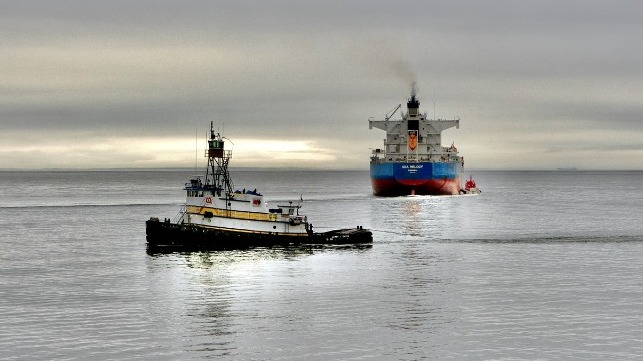Op-Ed: 2021 is Critical to the Future of the U.S. Maritime Industry

Within hours of entering the new year, the maritime shipping industry saw quite a positive outlook for the future. With the enactment of the National Defense Authorization Act (NDAA) into law on January 1, 2021, many of the doubts and concerns the maritime industry had were eased, as the exceedingly important maritime legislation in the bill has finally coming to fruition.
The industry, which is a tightly woven network of shipbuilding, vessel operations, ports, mariners, and dockworkers, was particularly enthusiastic in seeing the Biden administration support regulations surrounding the Jones Act. With President Biden’s goal to double offshore wind, the clarity that Jones Act vessels need to be used to support U.S. offshore wind projects, and the “Buy American” executive order, the Jones Act has clear affirmation from the White House.
The continued push to ensure American workers - especially union workers - are kept top of mind is a great motivator for maritime industry experts and advocates, as we see a positive change in laws and administration policies. Although the industry is hopeful and vigilant, the reality is that the United States, once the largest shipbuilding nation in the world, is no longer a major producer of tonnage. In fact, despite significant and generous tax advantages accorded to U.S. Jones Act assets, the United States has not produced a single major commercial vessel for export since 1960 and the U.S. went from producing up to 70 commercial ships a year in 1980 to less than five annually in the last decade.
The U.S. now ranks 19th in the world for commercial shipbuilding, with less than half of a percentage point of market share. Today we need to face the consequences left by decades of inaction. This long cession of new construction has left us behind the rest of the world in terms of having technologically advanced vessels in the Jones Act fleet, while other nations in Europe and Asia have been continuously evolving and perfecting modern production and manufacturing methods. In fact, within the next decade, we estimate more than 4,000 vessels in the U.S. will need to be replaced due to age or non-compliance with regulations. We must accomplish this task.
On top of our shipbuilding crisis, the U.S. is experiencing an infrastructure crisis: existing systems have been overwhelmed by growth and the U. S. can no longer adequately meet its present needs (with no secure plans or capacity for future expansion). Whether it’s airline delays, rail and subway overcrowding, longer delivery times, or growing road gridlock, the result is the same - everyone in the U.S. is feeling the effects of inadequate infrastructure.
The American Marine Highway (AMH) is one part of our infrastructure that is underutilized and costs nothing to build and little to maintain. America’s 25,000 miles of coasts, existing ports network, and rivers are some of the nation’s greatest natural transportation resources. The American Marine Highway, shipbuilding industry, vessels, and ports all work together to provide a seamless water transportation network.
As the COVID-19 pandemic and natural disasters like hurricanes demonstrate, our need to transport goods through ports during times of crisis is indispensable. But equally important, these ports should be indispensable even during times of calm. Seeing the bipartisan support for the Jones Act substantiates its importance not just for economic prosperity but national security.
Anything that promotes use of our waterborne transportation network, whether it be related to shipbuilding, ports, vessel operations, or anything else in the maritime industry will be helpful to creating a strong marine transportation industry. As other nations use water extensively as a third mode of transport, so should the U. S. - and the sooner the better. This will allow the U.S. to be more competitive on the world stage, increase domestic distribution capacity, reduce gridlock and pollution, relieve stress on our landside transportation networks, and revitalize our shipbuilding industry.
The solution lies within the boundaries of the Biden administration’s policies, which will affect the growth of our country’s marine capabilities. With the requirement that U.S. vessels carry wind farm components, there is an obvious and clear need to jumpstart domestic shipbuilding as well as to improve our ports to be able to handle the specialized equipment. Integrating water highways into our supply chain networks, whether it be for offshore wind or for containerized domestic cargo, will improve the resiliency of our supply chain networks, reduce the burden on our traditional infrastructure and provide green jobs for the future.
A cohesive effort by our government and private sector to set in motion the revitalization of our ports and shipbuilding efforts would be welcome. The increased funding of $750 million annually for the Port Infrastructure Development Program (PIDP) is a move in the right direction. Creating confidence in the vitality of the marine sector as a fundamental and economic strength for our country must occur now, if existing transport distribution capacity needs are to be satisfied both presently and in the future. There is no other ready-made choice.
Percy R. Pyne is the Chairman, CEO, and Founding Partner of Green Shipping Line (GSL).
The opinions expressed herein are the author's and not necessarily those of The Maritime Executive.
